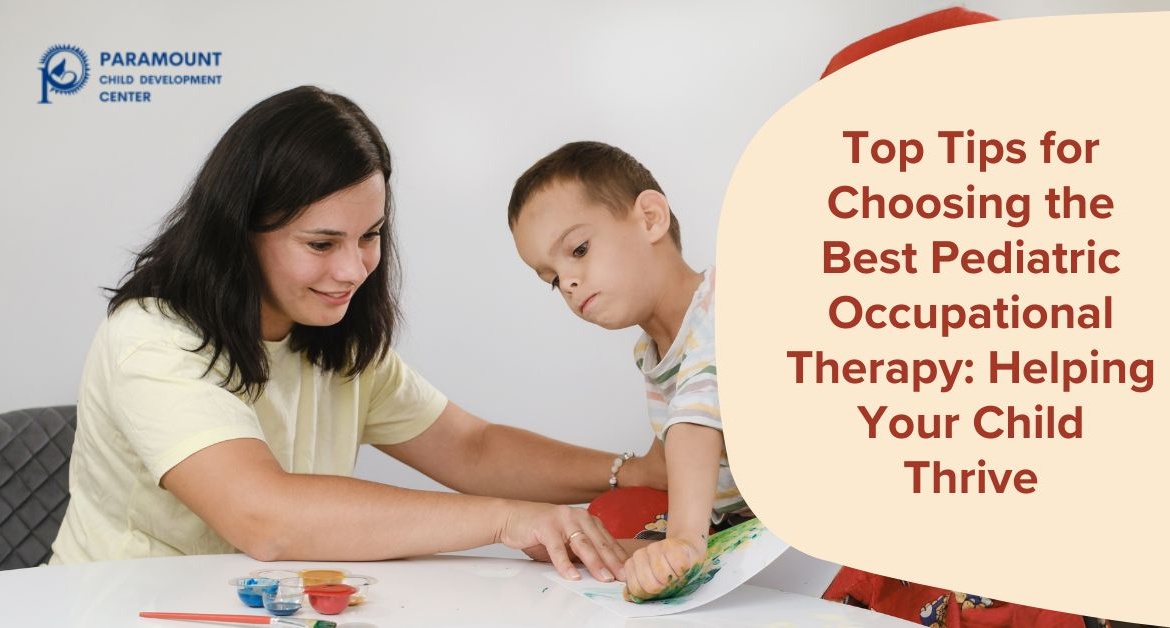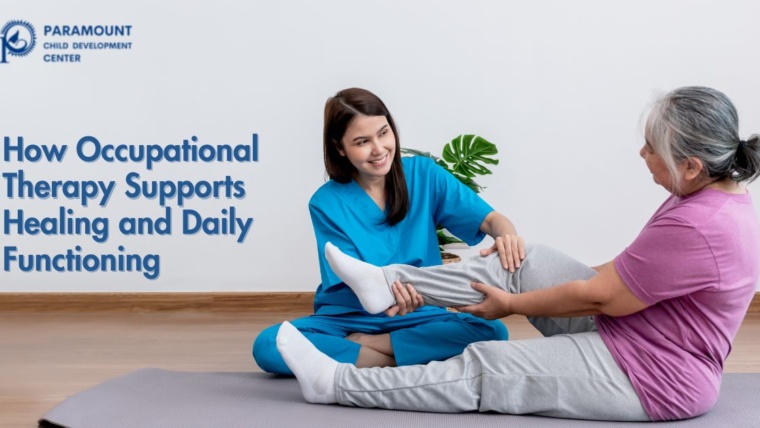Pediatric occupation is what engages children to learn and develop functions in their environment. No matter what form of handicap it takes-from issues with motor skills to sensory processing influences to obstacles in social interaction-the therapy has proven effective in all its varied forms of support and motivation for the child to work through it. Choosing the suitable therapy program is essential in ensuring that your child engages in the best kind of care to satisfy his or her needs. This blog thus shares a few crucial tips in choosing the best pediatric occupational therapy for your child.
What Pediatric Occupational Therapy Is All About
Pediatric occupational therapy aims at achieving development in children’s performance of daily tasks. Typical things might include fine and gross motor actions, sensory homeostasis, socialization, and any basic self-help activities such as dressing or eating, which are required for full participation in home, school, and community activities.
Therapist works closely with children to help them in the inability to function based on developmental delays, sensory processing disorders, autism disorders, or any physical disability. Children accomplish their developmental milestones resulting in increased independence and self-confidence using individualized treatment plans.
Reasons for Choosing Pediatric Occupation Therapy
So many benefits accrue from choosing occupational therapy for the child, an example being:
- Skill Development: These therapists develop fine motor skills such as writing and buttoning clothing and gross motor skills such as walking and jumping.
- Regulating Sensory Input: Assist children who have problems understanding what a sensory input is to respond more appropriately to it.
- Socialization and Interaction with Peers: An increase in interaction with peers is improved when under therapy and a better bonding.
Functional Independence: Therapy helps kids in streamlining how they go about performing activities such as meals, clothing, and grooming.
Choose a pediatric occupational therapy clinic that best fits your child’s needs through an all rounded approach.
Tips on Selecting the Best Pediatric Occupation
- Knowledge of the needs of and by your child
Before you move toward getting a therapy program, find out what exactly seems to be the problem, cause of concern, or need of your child. Is he having trouble with fine motor skills? Does he or she have sensory issues that affect daily functioning? Knowing these needs will help locate specialized facilities that will fit those criteria.
- Thorough Clinic Research
Find a clinic specializing in pediatric care with highly trained therapists. A good clinic will have received positive reviews and testimonials from fellow parents. An in-person visit would also give you a sense of the clinic’s ambiance and facilities.
- Check the Qualifications of Therapists
Make sure the therapists are licensed and trained for pediatric work. They should have experience working with children with challenges similar to those of your child.
- Consult Individualized Treatment Programs
The best programs create individualized plans for every child. How does the clinic evaluate the child when providing a plan that is tailored to his particular objectives?
- Review the Clinic’s Therapy Approach
A great pediatric occupational therapy clinic will embrace evidence-based modalities and mix them throughout sessions, so that children can have fun while being treated. Play-based therapies are best because children do not pay attention and thus do not feel overwhelmed.
- Think of Parent Involvement
It is important for parents to be involved because that would probably assure continuity of progress from the clinic to the child at home. The clinic is great if it can provide some level of input on how the parent could help the child learn more outside the therapy sessions.
- Look for Joint Action
A number of clinics nowadays include multidisciplinary services, where an occupational therapist would work with a speech therapist or a physical therapist to provide a holistic treatment.
- Check Accessibility and Convenience
Location matters! Choose a clinic with few connecting bus stops and easy routes by foot, if possible. When you feel that therapy takes too much time from other family obligations, flexible scheduling becomes even more critical.
- Keep An Eye Out For Progress Tracking
The best schools constantly evaluate your child’s progress and alter treatment plans that are needed. Inquire how they measure success and how they keep parents updated.
Key Areas Addressed in Therapy
Therapists will be working on different areas of development according to your child’s needs.
- Fine-and-gross motor skills: These are for improving things such as getting a child to hold a pencil and climbing stairs.
- Sensory Integration: Helps children be able to integrate input through their senses, whether it is overstimulated or under-responsive.
- Social Skills: Such as taking turns, sharing, or reading social cues to establish better relationships among peers.
- Activities of Daily Living: Encouragement toward independence in tasks such as brushing teeth or tying shoelaces.
Pediatric occupation targets these areas, and over time, confidence and independence will develop for the child.
Advantages Of Proper Choice Of Therapy Program
Right program selection guarantees that your child receives the very quality care that he/she needs in the problems unique to him/her. The benefits include:
- Better academics, thanks to a better attention span and a better handwriting ability.
- Improved emotional regulation by processing sensory inputs.
- More independence in all daily living activities.
- Communicating and playing better, thus improving social interaction.
- Support because they really feel empowered to help their child grow.
Why It Matters
With the right therapy program, the positive difference could be huge in the development of your child. With consistent support given to them by the accomplished therapists of the center that they can trust, children can outdo the issues that once seemed insurmountable.
Conclusion
The experience of finding the best pediatric therapy can be made much easier if the program or clinic is right standpoints. You can make an educated decision to help your child succeed by evaluating the child’s needs at home, fully investigating the clinics, and weighing their approaches.



